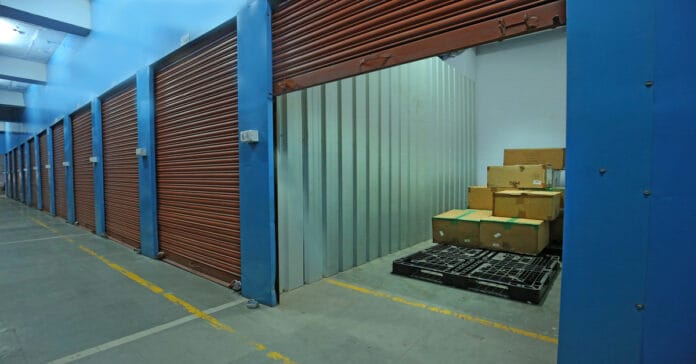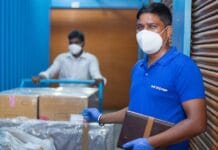Self Storage Security – In the hustle and bustle of life, self-storage units offer a safe space to our belongings, keeping them safe and secure when space is limited at home. But beyond just being a place to store our things, ensuring the security of these units is important. Imagine the peace of mind knowing that your treasured possessions are protected from harm’s way. Whether storing important documents of students, sentimental mementos or household items, the security of your self-storage unit matters.
In this guide, we delve deep into the importance of self-storage security and how it impacts your storing experience. From safeguarding valuable items to protecting against potential risks, we’re here to equip you with the knowledge and tools needed to make informed decisions when it comes to securing your space.
Self Storage Security – How to Choose?
Selecting a secure self-storage unit is important for your belongings. Begin by evaluating the facility’s security measures. Look for features like surveillance cameras, well-lit premises, and on-site staff presence, ensuring a safe environment for your items. Do inquire about secure entry methods such as electronic keypads or card access to prevent unauthorized entry.
When assessing the unit location, consider opting for an interior unit for added security against external elements. Interior units are shielded from direct outdoor access, minimizing risks. By prioritizing these factors, you not only protect your valuables but also gain peace of mind knowing that your chosen self-storage facility is equipped with the necessary security measures to keep your belongings safe and secure during their stay.
1. Understanding the Basics of Self Storage
History and Evolution: The concept of storing goods outside of one’s home isn’t new. Ancient civilizations used communal storage areas for grain and other commodities. Modern self-storage, with individual units for personal or business items, began in the mid-20th century in the U.S. and has since become a global industry.
Types of Storage Units: From climate-controlled units that protect sensitive items from temperature fluctuations to drive-up units for easy loading and unloading, the variety ensures there’s a unit for every need.
Cost Considerations: Prices vary based on size, location, and additional features. It’s essential to balance cost with requirements to ensure you’re not overpaying.
2. Choosing the Right Size
Inventory Your Items: Start by listing down everything you plan to store. This will give you a clear picture of the volume of goods.
Estimate Space: Use online space calculators or consult with storage facility staff. They can provide insights based on your inventory.
Consider Future Needs: Think long-term. If you anticipate acquiring more items, factor in that extra space.
When you store your goods, make sure to carefully inventory all your items, estimate the required space using online calculators or guidance from storage facility staff, and consider your future needs to ensure you choose the right size storage unit.
3. Preparing Your Items for Storage
Cleaning Techniques: Different items require different cleaning methods. For instance, wooden furniture benefits from polishing, while electronics need a dust-free environment.
Packing Materials: Invest in quality packing materials. Bubble wrap, silica gel packets (for moisture control), and sturdy boxes can prevent potential damage.
Labeling Systems: Beyond just naming the box, consider using color codes or numbers. This can help in organizing and accessing items more efficiently.
4. Maximizing Space with Efficient Packing
Box Sizes: While uniform boxes are great for stacking, having a few larger boxes for bulky items and smaller ones for heavy items can be beneficial.
Packing Strategy: Think Tetris! Efficiently filling the box without leaving gaps ensures stability when stacked.
Tools and Equipment: Consider using tools like vacuum bags for clothes or storage bins that can slide under furniture.
5. Organizing Your Storage Unit
Vertical Space: Often overlooked, the space above your head can store lighter, infrequently used items.
Digital Mapping: Use apps or software to create a digital layout of your unit. This can be especially useful for business inventory or extensive personal collections.
Rotation System: If you’re storing items that you’ll need to access, create a rotation system. This ensures that items you need are always accessible.
6. Safety and Security Measures
Surveillance Systems: While most facilities offer CCTV, having a personal security camera inside your unit, if allowed, can provide added peace of mind.
Pest Control: Regularly inspect for signs of pests. Consider using natural repellents or consulting with the facility’s management about their pest control measures.
Climate Control: For items sensitive to temperature or humidity, like wine or artwork, a climate-controlled unit is essential.
7. Regularly Checking on Your Stored Goods
Monthly Visits: Aim to visit your storage unit at least once a month. This helps in identifying any potential issues early on.
Update Documentation: If you’ve created an inventory or digital map, update it during each visit, especially if you add or remove items.
Feedback Loop: Engage with the storage facility’s management. Providing feedback or seeking advice can lead to a better storage experience.
8. Insurance and Documentation
Understanding Policies: While many storage facilities offer basic insurance, it might not cover all items or potential damages. Understand the policy’s terms and consider supplemental insurance if necessary.
Document Everything: From contracts with the storage facility to an inventory of stored items, keep all documents organized and accessible.
Valuation: For valuable items, consider getting them appraised. This ensures you have a record of their worth, useful for insurance purposes.
9. The Art of Decluttering
Regular Clean-outs: Every few months, assess whether you still need everything in your storage unit. You might find items that can be sold, donated, or discarded.
The One-Year Rule: If you haven’t used or needed an item in a year, consider whether it’s worth keeping.
Benefits: Regular decluttering can lead to downsizing your storage unit, saving money in the long run.
Conclusion
By choosing a secure facility, packing thoughtfully, and implementing digital and physical safeguards, you’ve laid a robust foundation for a worry-free storage experience. Always prioritize the security of your valuables, use climate control wisely, and embrace the power of insurance for added protection.
Regular checks, emergency preparedness, and a well-maintained facility further contribute to a secure storage journey. With these measures in place, you’re not just storing items; you’re safeguarding memories and possessions with confidence. So, go ahead, lock that unit with assurance, and go on your storage adventure worry-free.
FAQs
A: Securing your self-storage unit is vital to protect your belongings from theft, damage, or unauthorized access.
A: Look for facilities with surveillance cameras, secure access control, and well-lit premises to ensure a safe storage environment.
A: Yes, you can and should use your own locks to enhance the security of your self-storage unit.
A: Use climate-controlled units and proper packing materials to safeguard your belongings from temperature fluctuations and humidity.
A: Yes, you can purchase insurance coverage for your stored items to protect them from theft, damage, or other unforeseen events.
A: Yes, many facilities prohibit hazardous materials, illegal items, and perishable goods to maintain a secure storage environment.
A: Organize items strategically, leaving pathways for easy access and conducting periodic checks to ensure everything is in its place.
A: Regularly check your stored items to ensure they are in good condition and to address any potential security concerns promptly.
A: Yes, you can authorize others to access your unit, but it’s essential to inform the facility management in advance to ensure a secure process.
A: Immediately report any security concerns to the facility management and, if necessary, consider enhancing security measures like changing locks or adding additional security features.







